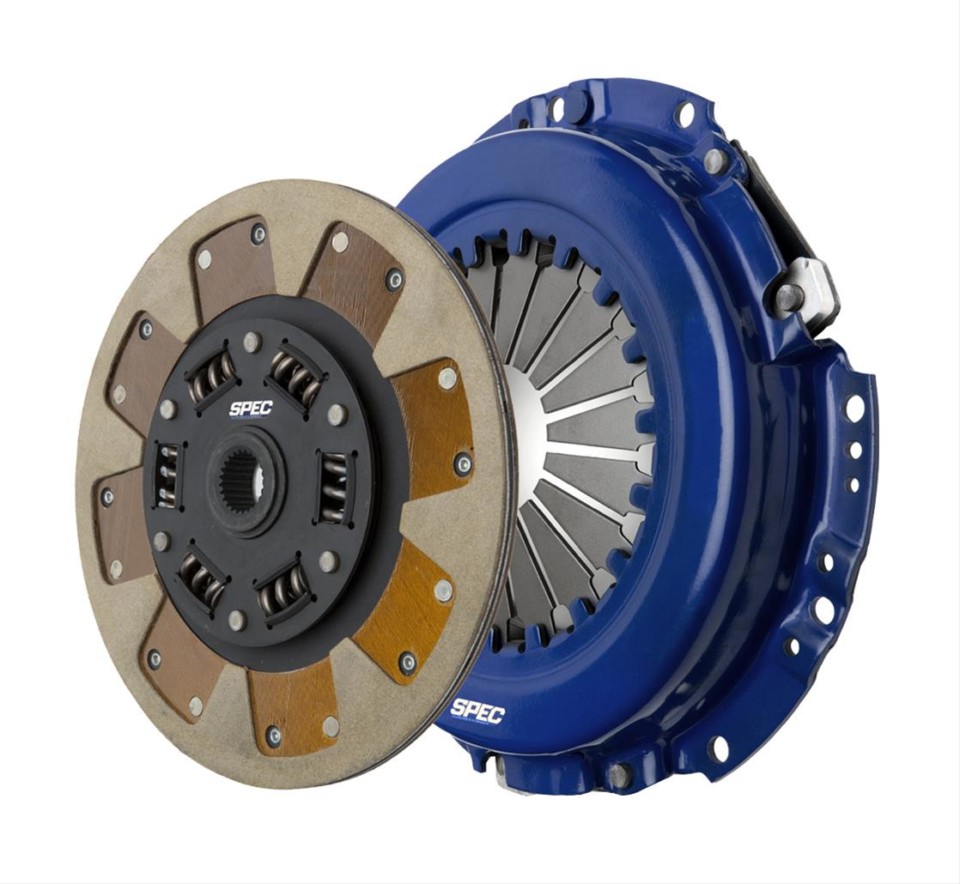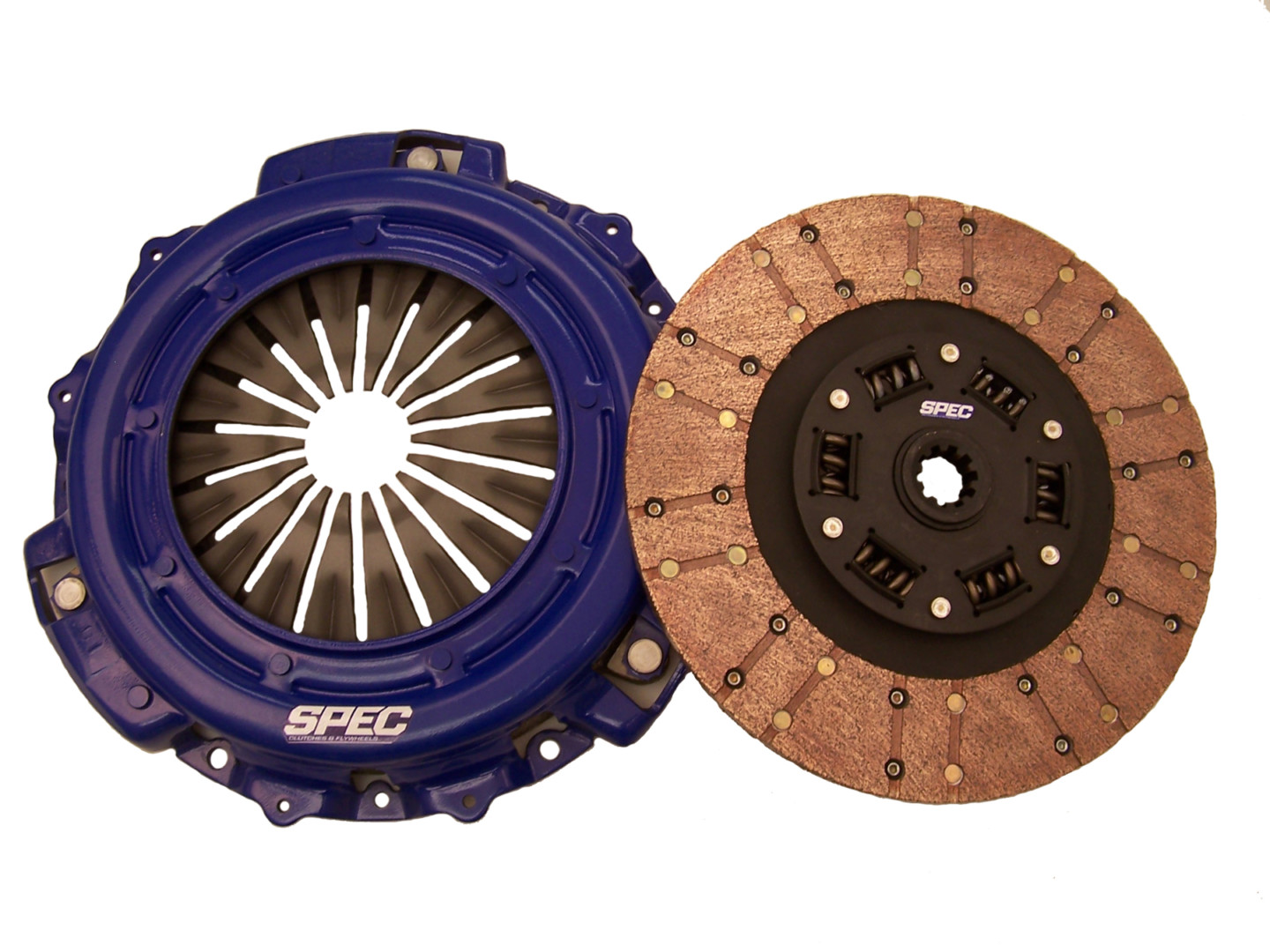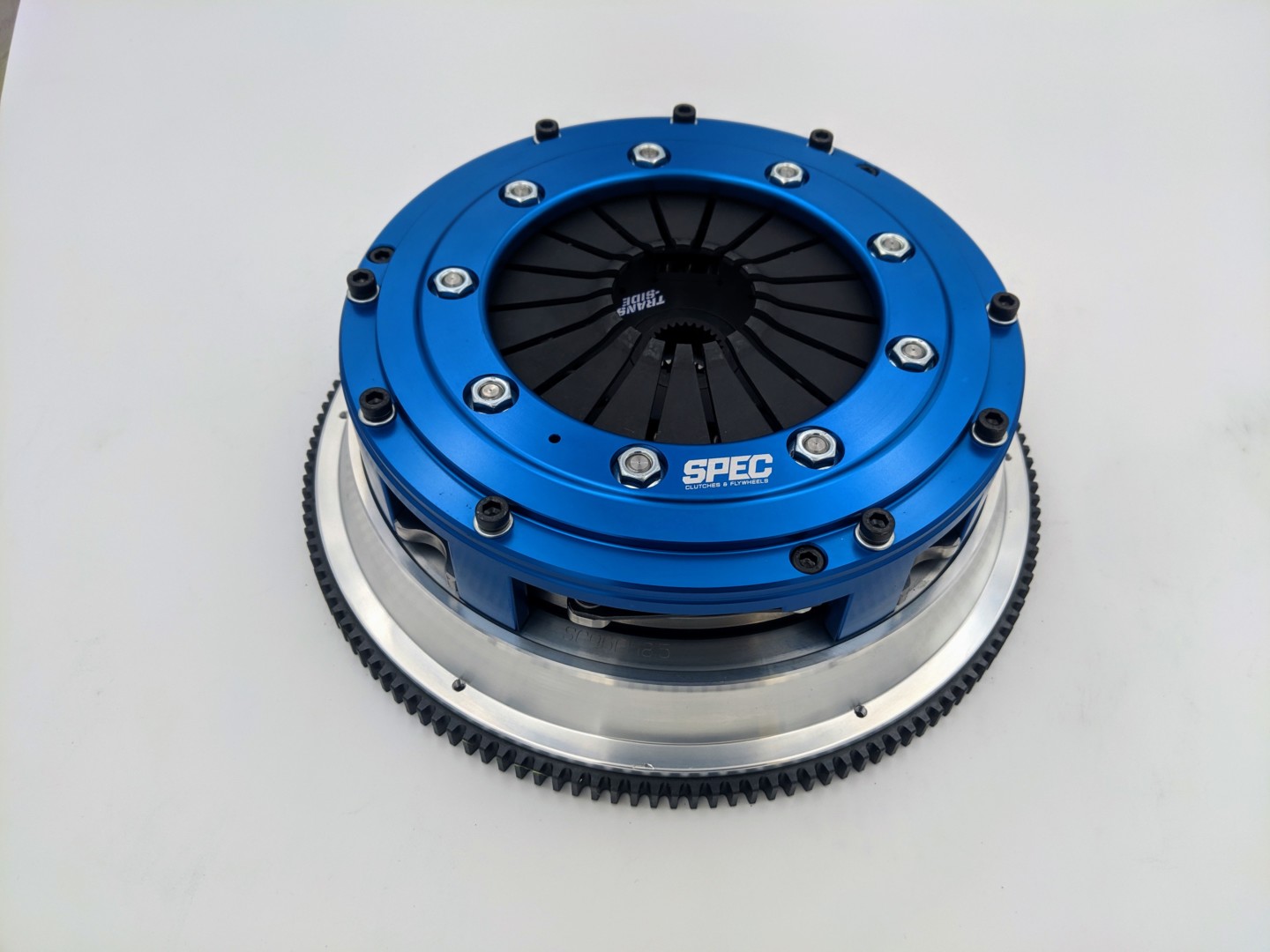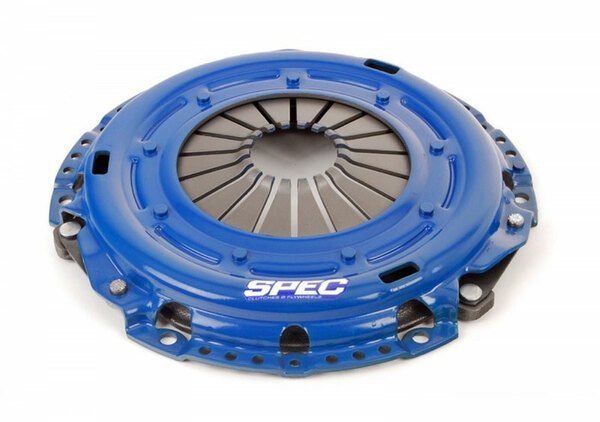To try and provide a brief, but informative, summation of how a performance clutch functions, we reached out to the experienced people at SPEC Clutches. Shelly and David Norton are joint owners and were eager to provide us with all the technical information we needed to accurately dissect a clutch. This included, in easily comprehensible terms, just how the various elements function and how they affect manners and performance.
For the sake of brevity, we focused on four main elements: friction materials, hub designs, pressure plates, and diaphragm springs. If we can understand these four parts and how they operate, we can get a good sense of how a clutch functions and how it can be tailored to suit the different demands imposed on it by street and spirited driving.
SPEC Friction Materials
SPEC works with seven different compounds — all but two being proprietary. We’ll first rank these from lowest coefficient of friction to highest, then describe them in detail below.
- Steel-backed organic matrix integrated with Kevlar
- Graphite or copper fibers
- Pure Kevlar fiber without any abrasives or fillers
- Carbon graphite
- Ceramic semi-metallics (two different mixes)
- Sintered iron
- Super Carbon

SPEC SA002 kit provides a nice compromise for mild street duty with the ability to go autocrossing and drag racing. A Kevlar construction with a full-face disc and a sprung hub makes life easier on the street.
Recent advances in friction material technology have allowed SPEC to formulate high-friction-coefficient materials, which were typically too rough for street use, with the manners and progressiveness one expects in a road car. Not only are these more manageable than high-friction-coefficient materials have ever been, but they also have excellent wear life for daily commutes. Oftentimes, SPEC’s engineers will adjust the material application to achieve the desired performance.
One example of this can be seen in the comparison between a full-faced, puck-style, and a segmented clutch. The materials alone do not dictate the feel and performance of a unit; clamp pressure, diameter, mass, friction application, and car-specific factors such as gearing also add to the equation. However, most of what the end-user notices when engaging the clutch is related to the material type and style of the friction disc.

SPEC SF483F clutch kits feature carbon-graphite full-faced material that offers unparalleled life, friction coefficient, and drivability in one package.
All of SPEC’s materials have their place on the track, even the stage one kit. The most street-friendly materials—organic, Kevlar, and SPEC’s organic-Kevlar hybrid material — are considered softer and quickly meet optimum friction temperature. These materials are also the easiest on friction surfaces.
For those looking for more performance without any diminished civility, SPEC’s semi-metallic compounds come into play. These are slightly harder and take a few engagements to reach optimum temperature, but it is in these compounds that modern technology has provided the largest benefit. The carbon graphite semi-metallics offer and exceed the friction coefficient of some older generation metallics, but wear the engagement surfaces less, engage more smoothly, and are not nearly as abrasive when cold. Thanks to recent advancements, these higher-performance materials are great options for some daily-use applications.
The sintered iron offers the highest friction coefficient, but also contains the most metal, weighs the most, and is the most abrasive—especially when cold. The iron disc assembly is designed to slip; the mix SPEC uses is common in NHRA Top Fuel drag racing, but an iron disc assembly can be used in a non-slipper application when maximum holding power is required.
SPEC’s Super Carbon represents the pinnacle of material technology and, appropriately, is the most costly to manufacture. The surfaces of a carbon assembly are carbon as well, which is why it is also called carbon/carbon. This matrix is extremely lightweight and offers high torque capacity, unparalleled heat threshold, and a soft engagement. Truly, no other clutch type capable of withstanding a 5000-degree Fahrenheit burst is as progressive.
The most valuable characteristic of carbon is its ability to dampen driveline shock under the most extreme engagements. A carbon twin-disc surface and hub stackup weighs less than two pounds and engages very much like a stock clutch—and this assembly can handle 1,000 lb-ft of torque. The only functional downside is a rapid cold wear rate. Obviously, the only other downside is cost. A real carbon assembly starts at $2,800, and units with many discs can eclipse $6,000.
Hub Designs
The main purpose of a sprung-hub disc is low-speed-engagement comfort—as in smoothness when starting from a stop or a slow roll. With a sprung-hub disc, the coil springs simply absorb and dampen the loads of clutch engagement, which allows power transfer to be progressive enough for easy modulation by the driver.
With a solid-hub clutch disc, the power transfer is immediate and can give the clutch an abrupt and occasionally irritating engagement. The notion of an “on/off” engagement, especially with an aggressive disc, might deter some from using them in street applications. SPEC mentioned that user reports show its Stage 1 and 2 discs with rigid hubs and solid flywheels are still progressive enough for daily use in traffic. However, anything more aggressive than that warrants a dampened hub for driving in traffic.
When using a performance clutch, it’s usually difficult to differentiate between a sprung hub and a solid hub once the car has gained speed. At speed, the configuration of the material would dictate how much difference you can feel. For example: a three-puck versus a six-puck disc. A six-puck, due to greater surface area, will feel more progressive thanks to the distribution of pressure over a greater area. Predictably, a three-puck, with half the surface area and exponentially more pressure being applied to the material via the pressure plate, will seem snappier and less forgiving. Therefore, a rigid six-puck disc may feel like a sprung three-puck disc.
Pressure Plates
The pressure plate is responsible for transferring the power from the engine to the transmission by clamping the disc (splined to the gearbox input shaft) to the flywheel (bolted to the engine crankshaft).
The pressure plate pressure is a major factor in determining the power level at which the clutch disc will slip. A higher-pressure unit would provide a higher torque capacity and a less-forgiving engagement than a lower-pressure unit with the same disc.
It is commonly assumed a pressure plate with a higher clamp load will require higher pedal effort to actuate, which is true for most lever-style pressure plates and some diaphragm-style plates with thick diaphragm springs. However, certain processes, such as multi-disc clutches, allow for higher clamp loads with equal and lower pedal requirements. Primarily concerned with engineering a balanced unit, SPEC aims to find substantial load gains with minimal pedal-effort increases.
Diaphragm Springs
The diaphragm spring is a component within a pressure plate assembly that applies force to the pressure ring and, thus, the clutch disc. It is responsible for applying force to clamp the disc, as well as relieving force to release the disc, and allowing the driver to smoothly change gears.
When the diaphragm spring is loaded—when the pressure plate is bolted to the flywheel and the pedal is at the top of its travel — it is applying force to the pressure ring and clamping the disc. In its unloaded state, the release bearing applies pressure to the diaphragm spring until it pivots over the pressure ring fulcrum and releases the disc. It is this movement that uncouples the engine and gearbox and allows a synchronized shift.
SPEC Coming in Clutch
There are a hundred different ways to go about selecting a SPEC clutch. With a basic educational foundation, you can make a better decision on what type of product best serves your needs. However, it’s best to talk with SPEC if you’re after something tailored to your budget, your horsepower aims, and your level of patience.




















